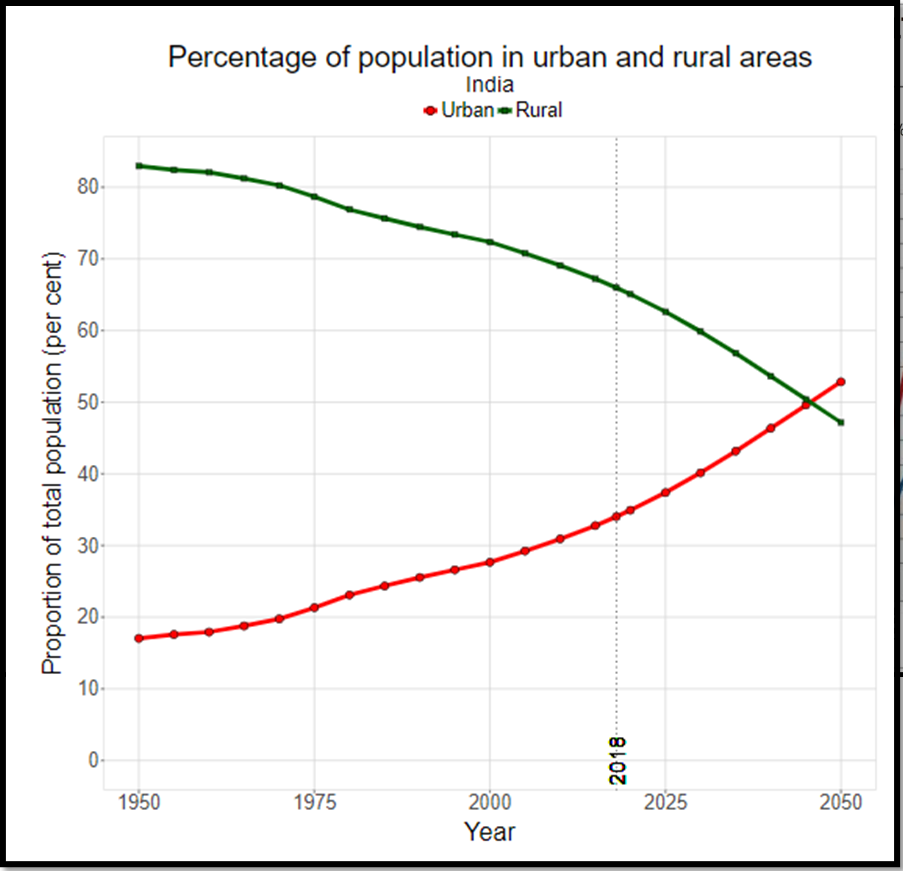URBANISATION, NO LIBERATING FORCE FOR DALITS
Syllabus:
- GS 2: Salient features of Indian Society, Diversity of India.
- Developmental issues, urbanization, their problems and their remedies.
Focus:
- 14 April every year as Ambedkar Jayanti in India.
Source: HARWARD
Urbanisation in India has been envisioned as a path towards social and economic liberation, particularly for the historically marginalized Dalit community. Dr. B.R. Ambedkar, a prominent Dalit leader and scholar, championed the move from rural to urban settings as a means to escape the entrenched caste hierarchies of village life. However, despite these aspirations, urban spaces have often replicated or even intensified the same caste dynamics they were meant to dilute.
Urbanisation and Ambedkar’s Vision
- Opportunity for Anonymity: Ambedkar viewed cities as spaces where Dalits could escape the rigid caste identities enforced in villages, fostering anonymity among diverse populations.
- Weakening of Caste Systems: He argued that urban settings diluted traditional caste hierarchies, offering Dalits better opportunities for social mobility and economic independence.
- Access to Resources: Urban environments promised access to resources and services, potentially enabling Dalits to improve their living standards and educational prospects.
- Shift from Caste to Class: Cities were seen as platforms where societal status could be determined by economic success rather than caste lineage.
- Historical Context: Despite the persistence of caste biases, urbanisation was advocated by Ambedkar as a strategic move away from the caste-dominated village life.
Challenges in Urban Spaces
- Continued Caste Discrimination: Despite urban migration, Dalits often face discrimination in housing, employment, and social integration.
- Ghettoisation: Many Dalits end up in segregated urban areas, which perpetuates socio-economic disparities.
- Economic Barriers: Entry barriers in certain professions remain high for Dalits, reflecting lingering caste-based prejudices in skill-based industries.
- Inadequate Representation: Dalits frequently lack sufficient representation in urban governance, affecting their ability to influence policies that impact their communities.
- Persistence of Caste Markers: Cultural and social markers of caste, such as dietary habits, continue to influence the acceptance and integration of Dalits in urban communities.
Policy and Segregation
- State Sanctioned Segregation: Government policies have sometimes reinforced caste divisions, notably in the regulation of spaces such as meat shops.
- Housing Discrimination: The Indian real estate market often excludes Dalits through both overt biases and covert norms like dietary preferences.
- Infrastructure Inequality: Public services are disproportionately poor in areas predominantly inhabited by Dalits, highlighting systemic neglect.
- Forced Evictions: Urban development policies disproportionately target Dalit and Muslim communities for slum clearances.
- Environmental Injustice: Dalits are frequently relegated to live in environmentally hazardous areas, indicating a form of spatial discrimination.
Societal Impact
- Cultural Reinforcement of Caste: Urban areas have not fully dismantled the cultural norms surrounding caste, with purity-pollution dynamics still prevalent.
- Visible and Invisible Barriers: While some barriers are legislated, many social prejudices operate subtly, influencing everyday interactions and opportunities for Dalits.
- Resistance and Resilience: Dalit communities have developed forms of resistance and solidarity, advocating for equal rights and recognition in urban landscapes.
- Changing Perceptions: Progressive urban Dalits are challenging traditional caste stereotypes and advocating for more inclusive policies.
- Media and Awareness: Increased awareness and media attention to caste issues in cities have spurred discussions and debates on social justice and equality.
Future Prospects
- Policy Reforms: Advocacy for reforms in urban planning and housing laws could enhance inclusivity and reduce discrimination.
- Educational Opportunities: Enhanced access to education can empower Dalit youths, equipping them with tools to challenge socioeconomic barriers.
- Economic Integration: Initiatives to integrate Dalits in various economic sectors can help break the cycle of poverty and exclusion.
- Social Movements: Continued activism and social movements are crucial to raise awareness and drive change concerning caste in urban settings.
- Technological Advancements: Leveraging technology to bridge gaps in service delivery and to foster community building can help mitigate some of the urban challenges faced by Dalits.
After more than a century since Ambedkar advocated for urbanisation as a strategy for Dalit liberation, the Indian city continues to fall short of this transformative potential. While urban environments offer some opportunities for anonymity and socio-economic mobility, they also perpetuate segregation, discrimination, and exclusion. It is crucial to reevaluate and reform urban policies and attitudes to truly fulfill the promise of urbanisation as a liberating force for Dalits.
Dr. B.R. Ambedkar: Key Points
Major Contributions and Roles:
Important Organizations Founded:
Literary and Scholarly Works:
|
Source:The Hindu
Mains Practice Question:
Examine the impact of urbanisation on Dalit communities in India with reference to B.R. Ambedkar’s vision. Discuss the extent to which urban settings have succeeded in providing a liberating force for Dalits, and identify the key challenges that persist in the realization of Ambedkar’s aspirations for Dalit emancipation in urban areas. Suggest measures that can be taken to address these challenges effectively. (250 words)
Associated Articles:




